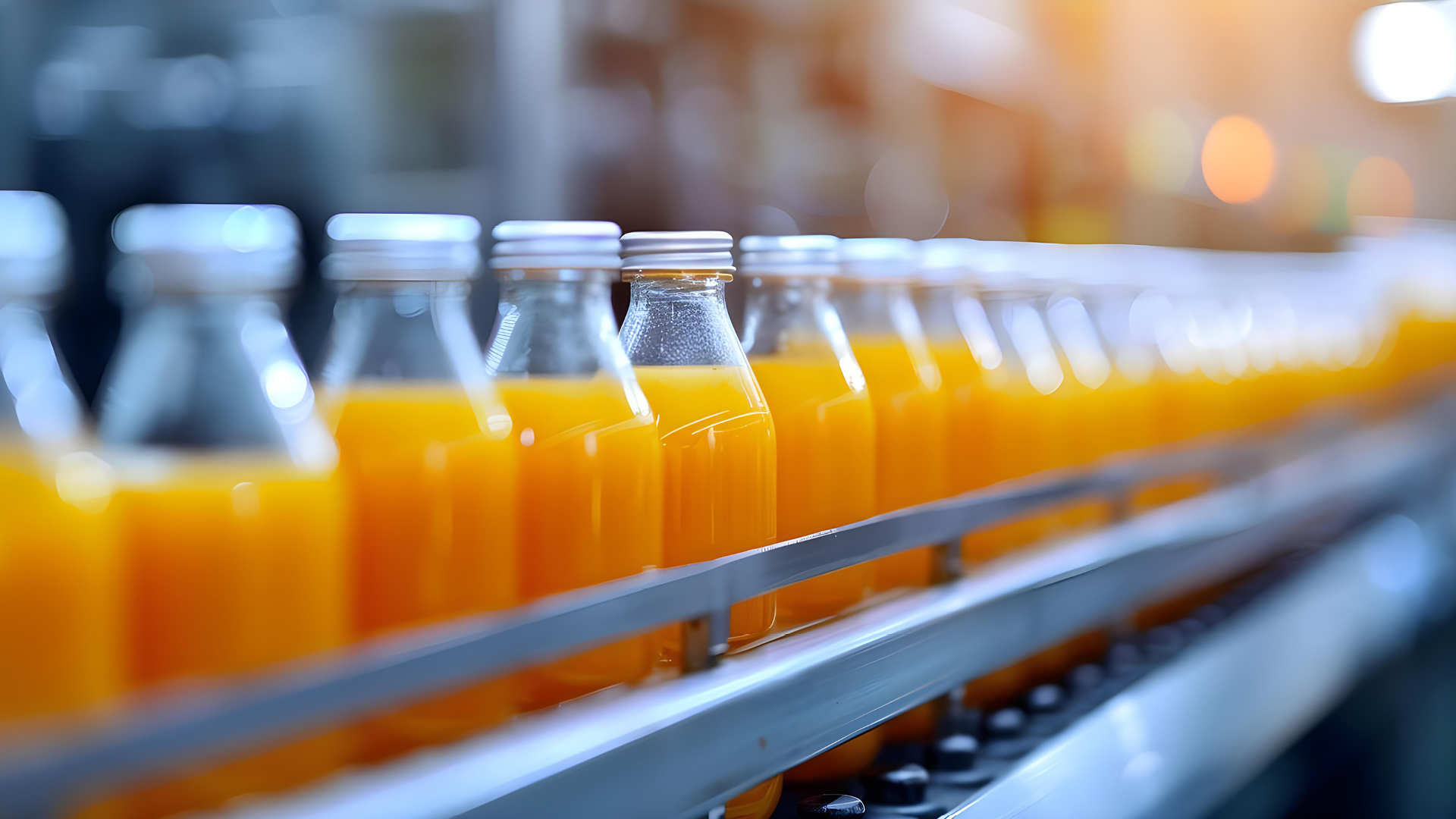Traceability means being able to track food throughout its entire life cycle. We explain how you can guarantee this.

Summary:Quality audits in the food industry ensure quality and consumer protection. They systematically check processes, standards, and regulations in production and distribution. Internal and external quality audits help identify risks, optimize workflows, and reliably meet legal requirements. An ERP system supports companies in meeting these requirements more easily and efficiently.
The food industry is one of the most sensitive sectors. When it comes to safety and quality, there is no room for deviation. Compliance with regulations and measures is verified in dedicated quality audits. Our article explains what food quality audits are, how they work, and what their results mean for companies.
Regardless of industry or context, quality audits systematically verify whether the definition and implementation of processes, activities, or systems meet defined standards, guidelines, laws, and norms. A food quality audit therefore refers to the examination and evaluation of processes, practices, and systems related to the production, processing, and distribution of food. Quality audits in the food industry primarily aim to ensure the safety and quality of food as well as compliance with the regulations that apply to the industry.
Handling food is highly sensitive. To provide maximum safety for consumers, various types of quality audits are conducted.
In an internal quality audit, the company itself reviews the effectiveness of its processes, draws the necessary conclusions, and takes corrective action. Internal audits include initial audits, in which processes are checked for the first time, and regular audits, which ensure continuous compliance with standards.
In an external quality audit, independent third parties verify compliance with standards. The following types of quality audits are particularly common:
The exact course of a quality audit in the food industry varies from company to company. However, several key steps are usually followed.
In preparation for the audit, the company under review compiles the required documents and evidence and checks production facilities and equipment on site for compliance with the requirements.
Before the actual audit begins, the auditors are welcomed and briefed. The process of the audit is discussed together. Once all questions have been clarified, the audit can start.
As part of the food quality audit, the auditor reviews all relevant documents and process records. The aim is to identify potential weaknesses and ensure compliance with standards.
A food quality audit also includes the inspection of relevant facilities such as production sites and storage areas. At this stage, auditors verify whether hygiene and safety standards are being met.
To reliably assess all relevant information about current processes, training measures, and compliance with requirements, interviews are conducted with the employees involved.
Auditors also check whether the actual implementation of processes in the company matches the documented procedures or whether deviations can be identified. Every step, from goods receipt to the packaging of the finished product, is examined in detail.
Next comes the review of the traceability of individual product components along the entire supply chain. Companies usually choose only suppliers that meet traceability requirements. In addition, regular spot checks and simulations are conducted to test whether the supply chain is capable of responding efficiently.
Once the preceding steps have been completed, a closing meeting is held. The audit results are presented, and recommendations as well as optimization measures are discussed. In the case of deviations, corrective actions are defined, and in severe cases, regulatory steps are initiated. A written report summarizes the results, deviations, and any recommendations or measures.
For the food company, the next step is practice: measures are implemented, deficiencies corrected, and processes optimized.
Typical measures include
Once a quality audit has been successfully completed and the results compiled, the key question is: what do they actually mean? In general, results from food quality audits are of great importance, as they provide the foundation for complying with food safety and quality regulations while making internal processes more efficient. Even deviations that trigger regulatory action can be seen as opportunities, since they form the basis for implementing improvements. Audit results can influence the following areas:
Audits create a variety of benefits for food companies while also presenting certain challenges.
Companies that have been audited and can prove this with a certificate receive global recognition for their products and processes.
Certifications provide customers with a strong sense of security and confidence.
Food quality audits can strengthen access to new markets by demonstrating that relevant safety requirements are being met. At the same time, they create a competitive edge.
The requirements for food safety and quality are guaranteed, and legal regulations are fulfilled.
Because audits ensure that processes are reviewed regularly, they can be optimized on an ongoing basis.
Audits in the food industry also present companies with challenges. It is not always easy to cope with the complexity of the supply chain, as numerous raw materials from different regions are involved. In most cases, many actors are also part of the process and must be taken into account during the audit. Since regulations and legal requirements often change quickly, the validity of audit results must be reviewed regularly. A further challenge is the lack of standardized assessment methods. Different auditors apply different evaluation criteria, which can result in varying outcomes.
With our industry-specific ERP solution Yaveon 365, food companies benefit from a range of functions that maximize automation. This makes it easier to complete food quality audits successfully. Particularly useful for this are the following features:
With the inventory list functions, companies can keep a clear overview of their stock – right down to batch level. Displaying the current batch status and expiration date of food products makes this possible.
From goods receipt to goods issue control – a wide range of quality control functions are part of our industry-specific ERP. For food companies, this is not only important but indispensable.
A product recall is one of the most critical situations in the food industry. If it happens, action must be taken quickly. With our lot tracking, it is immediately visible which lot is located where. This provides both security and responsiveness.
For companies in the food industry, it is vital to comply meticulously with shelf life requirements. The rule set in Yaveon 365 supports compliance with remaining shelf life.
Working with suppliers is part of the everyday business for food companies. But do they meet the strict criteria? With supplier qualification in our industry-specific ERP solution, the quality of collaboration is documented and visible at a glance.
Nuts, milk, and more: allergens and ingredients must be declared on food products. To ensure this, save time, and avoid mistakes, companies in the food industry use our specification management.
Not all raw material batches used in production necessarily have the same quality or specifications. Yaveon 365 supports you in selecting the right or most suitable raw material batches for production. This ensures that finished products always meet the desired quality.
If a process does not run smoothly, food companies must be informed as quickly as possible. Our incident management therefore makes it possible to monitor supply chain issues.
Pro or contra food quality audits? Definitely pro. Of course, there are challenges that affect companies to varying degrees. But they arise only from the fact that processes are introduced which provide safety for both food companies and consumers. Food quality audits are indispensable in the industry and should be carried out thoughtfully, responsibly, and with a focus on long-term benefits. The result: safe processes and confidence in handling your own products.

 How to trace food and beverages safely – Beitrag öffnen
How to trace food and beverages safely – Beitrag öffnen
Traceability means being able to track food throughout its entire life cycle. We explain how you can guarantee this.
 Quality control in food production – Beitrag öffnen
Quality control in food production – Beitrag öffnen
Quality control ensures that food always meets the highest standards of safety and quality through testing procedures and legal requirements.
 Sustainability in the food industry – Beitrag öffnen
Sustainability in the food industry – Beitrag öffnen
How an ERP system for food production helps to reduce waste, lower CO₂ emissions and promote sustainable processes.